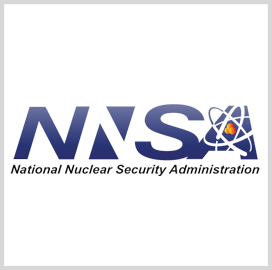
Enhancing nuclear
arms control
NNSA Eyes New Tech for Nuclear Arms Control
The National Nuclear Security Administration has launched a new effort to improve future nuclear arms control arrangements and is seeking input from industry members about potential technologies.
Jill Hruby, the administrator of the NNSA and the undersecretary of energy for nuclear security, said in an online interview with the Advanced Nuclear Weapons Alliance that new technologies will ensure that the NNSA will implement its new arms control advancement initiatives and added that current capabilities are dated. Hruby shared that the new solutions must cover satellite-based monitoring, artificial intelligence, secure communications and other technologies.
The plan, according to Hruby, is to build a testbed where various solutions would be tested, Breaking Defense reported.
The official wants to replace the current sustainment model, which she said was ideal at a time when nuclear disarmament cooperation prevailed. Hruby said that approach is unsustainable and that disarmament is impractical under current global conditions.
The NNSA administrator also wants to develop a next-generation workforce for arms control to ensure that there will be enough individuals who understand missiles and weapons, their storage and other related matters.
Hruby pointed out that the initiative has a long-term focus because current geopolitical conditions are not conducive to the creation of new arrangements. She also pointed out that any plans for the U.S. to discuss nuclear disarmament with Russia and China are inconceivable, making nuclear arsenal modernization important.
The Biden administration has proposed $50.9 billion for nuclear weapons programs for the fiscal year 2023, $16.5 billion of which will go towards the NNSA’s efforts to build and maintain nuclear warheads. The remaining $34.4 billion will go to the Department of Defense, which builds nuclear delivery systems.

Category: Federal Civilian




